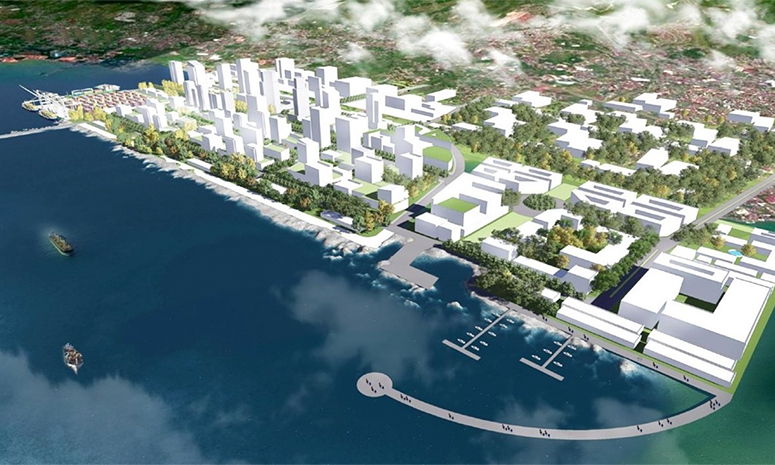Once upon a time, much of the land where some cities in the country now sit were completely under water.
But life happened, the country developed and cities had to be built.
Manila took a look time to make, Nick Joaquin wrote in his book Manila, My Manila, first published in 1990.
“What is now its ground used to be sea. The sea reached as far as the present towns of Mandaluyong and Makati,” wrote Joaquin, the late great National Artist for Literature.
As most of what is now land used to be completely under water, diggers in some cities found seashells in the world below, suggesting a shoreline across cities, Joaquin also wrote.
What happens in the future? How can our cities expand when land is finite.
This is the reason why property developers are turning to reclamation to build the cities of tomorrow.
Developers are offering reclamation as a viable solution to decongest the metropolis.
Reclamation 101
Reclamation is the process of creating new land from oceans, riverbeds, lake beds or other bodies of water.
It’s also happening in many parts of the world including dense places such as Hong Kong.
In the Philippines, there are at least 19 reclamation projects in various stages of permitting, development and implementation, according to the Philippine Reclamation Authority (PRA).
Critics
But reclamation, critics said, can cause massive flooding, liquefaction and tsunamis among others.
Massive flooding for instance occurs when excessive water fills normally dry areas along with currently flowing creeks and rivers, causing rapid rises of water in a short amount of time. They can happen with little or no warning.
However, the PRA has said that it requires reclamation projects to adhere to environmental laws for reclamation.
Furthermore, the engineering design of the reclamation must include provisions for adequate channels, drainages and discharges to the open sea as well as non-blockage of river outfalls and other flood paths.
The PRA cited as an example the areas from the Cultural Center of the Philippines all the way up to the Coastal Road in Las Pinas which it said do not suffer from severe flooding since the reclaimed areas with their seawalls and wave deflectors effectively block the waves.
Future developments
The Philippines can look forward to the creation of new land through several reclamation projects recently approved by the different government agencies.
Horizon Manila Reclamation Project
The Philippine Competition Commission (PCC) for instance recently approved the joint venture behind the Horizon Manila Reclamation Project, which is a raw-land reclamation and horizontal development of approximately 419 hectares of foreshore and offshore areas of the City of Manila along Manila Bay.
It is envisioned as a self-contained mixed-use community with commercial, institutional, residential areas, an area suitable for port and port related facilities, marina and tourism-related facilities, and other applicable uses to be located at the south by the Pasay-Manila boundary.
The project was awarded by the City of Manila to JBros Construction Corp.
“Through the project, the City of Manila aims to increase its land area that would serve as a center for commercial and residential use, with opportunities to create new sources of revenue and employment,” according to the project abstract.
Manila Waterfront City
Another reclamation project with the City of Manila is the Manila Waterfront City, a 318-hectare project envisioned as a master-planned development complete with a core central business district. It is a joint venture with the Waterfront Manila Premier Development Inc.

Ming-mori Minglanilla Reclamation Project
In Cebu, the Department of Environment and Natural Resources already issued an Environmental Compliance Certificate (ECC) to the 100-hectare Ming-Mori Minglanilla Reclamation Project.
The local government of Minglanilla and private consortium partner Ming-Mori Development Corp. (MMDC), an affiliate of listed firm Cebu Landmasters Inc. (CLI) are the proponents of the project.
These are just some of the major reclamation projects in the pipeline which would soon rise from Philippine waters.
Only time will tell how these new developments will look like and if they would indeed help create much needed land in our country today.
